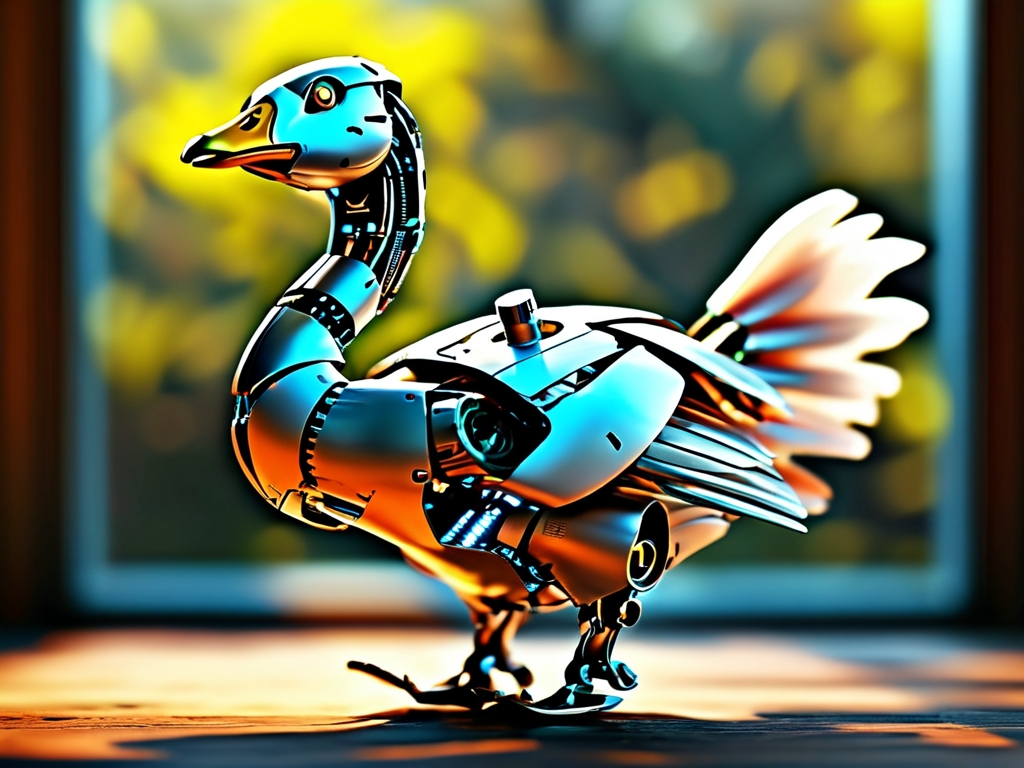In an era where technology permeates every aspect of life, the culinary world is no exception. One of the most intriguing advancements in recent years is the emergence of robotic braised goose technology, a fusion of automation and gastronomy that promises to redefine how we prepare and experience traditional dishes. This innovation bridges the gap between centuries-old cooking techniques and cutting-edge robotics, offering unprecedented precision, efficiency, and scalability.

The Roots of Braised Goose in Culinary Heritage
Braised goose, a beloved dish in Cantonese cuisine, has been a cultural staple for generations. Its preparation involves marinating the meat in a complex blend of soy sauce, star anise, ginger, and other spices, followed by slow-cooking to achieve tender, flavor-rich results. For decades, mastering this dish required years of apprenticeship under seasoned chefs, as even minor deviations in timing or ingredient ratios could alter the outcome. However, the rise of robotic technology is transforming this artisanal process into a reproducible science.
How Robotic Braised Goose Technology Works
At its core, robotic braised goose technology integrates AI-driven systems, precision mechanics, and sensor-based feedback loops to replicate human expertise. Here’s a breakdown of the process:
- Ingredient Analysis: Cameras and sensors scan the goose to assess size, fat distribution, and freshness, ensuring optimal marinating parameters.
- Automated Marination: Robotic arms apply sauces and spices with millimeter accuracy, eliminating human error.
- AI-Controlled Cooking: Machine learning algorithms adjust heat levels and cooking duration in real time, mimicking the intuition of a master chef.
- Quality Assurance: Post-cooking scanners evaluate color, texture, and aroma, flagging deviations from predefined standards.
This system not only preserves the dish’s authenticity but also enhances consistency—a challenge even for skilled chefs.
Benefits Beyond the Kitchen
The implications of this technology extend far beyond perfecting a single dish. For restaurants, it addresses labor shortages and reduces operational costs. A single robotic unit can prepare 50 geese simultaneously, a task requiring multiple chefs working in shifts. Moreover, energy-efficient cooking chambers minimize waste, aligning with global sustainability goals.
For consumers, robotic braised goose guarantees uniformity. Whether ordered in Shanghai or San Francisco, the dish retains its authentic flavor profile—a boon for global food chains aiming to standardize quality.
Ethical and Cultural Considerations
Despite its advantages, robotic braised goose technology sparks debate. Traditionalists argue that automating culturally significant recipes risks eroding culinary heritage. The "soul" of cooking, they claim, lies in human touch and adaptability—qualities machines cannot replicate. Others counter that technology democratizes access to premium dishes, allowing small eateries to compete with high-end establishments.
Additionally, ethical concerns arise regarding job displacement. While robots streamline operations, they threaten livelihoods in regions where braised goose preparation is a primary source of income. Balancing innovation with socioeconomic responsibility remains a critical challenge.
Case Study: A Success Story in Guangzhou
In 2022, Guangzhou’s famed Lao Chen Braised Goose restaurant adopted robotic technology to meet surging demand. Within six months, output tripled, and customer complaints about inconsistency dropped by 90%. Chef Chen Wei, a third-generation owner, initially resisted the shift but now champions it: "The robot handles repetition; I focus on creativity, like developing new spice blends." This hybrid model—machines for execution, humans for innovation—exemplifies a sustainable path forward.
The Road Ahead
The success of robotic braised goose technology paves the way for broader applications. Similar systems are being tested for Peking duck, dim sum, and even Japanese ramen. Researchers are also exploring 3D-printed flavor capsules to customize dishes for dietary needs without compromising taste.
However, scalability hinges on addressing cultural resistance and refining AI’s adaptability. Unlike structured tasks like frying or baking, braising requires nuanced adjustments—for instance, compensating for humidity’s effect on cooking time. Future iterations may incorporate advanced neural networks to better simulate human judgment.
Robotic braised goose technology is more than a culinary novelty; it’s a testament to humanity’s ability to harmonize tradition with progress. By preserving the essence of heritage dishes while embracing automation, this innovation ensures that cultural delicacies endure in a fast-paced, efficiency-driven world. As the line between chef and engineer blurs, one thing remains clear: the future of food is both exciting and delicious.



